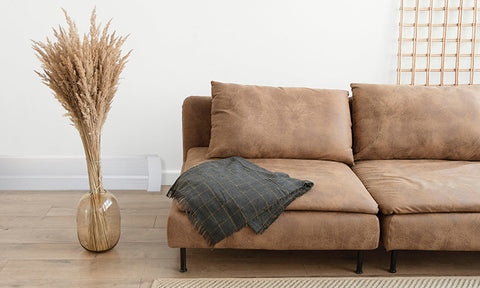7 Clever Solutions for Giving Hydronic Baseboard Heaters Aesthetic Appeal

Hydronic baseboard heat is one of the most efficient and effective ways to heat a home. For a very long time, the focus has remained on the functionality of hydronic heat. Thermodynamics has reigned supreme with very little thought for how a hydronic system looks.
Most other heating systems are fairly discreet, only making an appearance as a vent cover. Hydronic baseboard heat is visually present in every room, and historically, it hasn’t been that pretty.
Designers have taken on the challenge of transforming functionality into aesthetic appeal and there are now several options that welcome hydronic heat into the design of a space instead of trying to ignore it as part of the structure of the house.
Here are 7 ways to turn functional into decorative when it comes to hydronic baseboard heaters.

1. Paint
The simplest and quickest way to give your heater covers a facelift is to paint them. Use a high-temperature paint suitable for metal surfaces to prevent it from peeling or fading due to the heat. Popular choices are neutral colors like white, beige, or gray, but you can also go with a color that matches your room's theme.
Keep in mind that painting your covers is sometimes a temporary solution. You may not achieve a decorative look with paint alone and you’ll probably need to repaint at some point.
2. Install New Decorative Baseboard Heater Covers
Get rid of those old, less than appealing, covers and opt for something totally new. There are various designs and materials available, such as wood, metal, or plastic. These covers not only hide the utilitarian appearance of the heaters but can also provide additional safety by preventing direct contact with the hot surfaces.
Baseboarders offers the best decorative baseboard heater cover option with galvanized and powder coated steel construction and standout thermodynamics. They are available in 4 styles and 4 colors. Choose from our covers for electric baseboard heaters as well. It’s a huge step up from what you have now and will transform your design.
Get a Closer Look at Baseboarders
3. Camouflage with Curtains
Hydronic baseboard heaters require about 18 inches of clearance to operate safely and well. But that doesn’t mean you can’t cover them up when not in use.
For instance, during the summer months, strategically place curtains or drapes to conceal the baseboard heaters. You can also slide furniture in front of the heaters when not in use. Be sure to restore proper clearance once you turn the heat back on.

4. Distract with Other Décor
One approach to better integrate baseboard heat into your design is to minimize attention placed on them. Install covers that are the same color as the wall then add items nearby that draw the focus away from the baseboard heaters.
Hang wall art or apply decals purposefully around the baseboard heaters to distract from their appearance. You can create a gallery wall or simply hang a few decorative pieces to add charm to the area. Potted plants, decorative baskets, or other ornaments nearby also do a great job drawing attention away from the baseboards.

5. Strategize Your Layout
Similar to the distraction concept, you can arrange your layout to be visually centered around your furniture and away from your baseboard heaters.
Plan to position your furniture to draw attention away from the baseboard heaters. For example, a large, attractive sofa or an eye-catching piece of furniture can serve as a focal point, diverting attention from the heaters.

6. Provide Contrast
Instead of trying to hide your baseboard heaters, allow them to stand out. A contrasting accent color is an excellent way to achieve this. With a bit of contrast here and there throughout the space, your heaters will anchor the design instead of distracting from it.
Black or Oil Rubbed Bronze are both excellent choices that blend with any color scheme and provide contrast to lighter neutral colors.
Shop Colors

7. Trim It Up
A shift in your thinking can open up possibilities with your baseboard heaters. If you think of them as part of the trim of the room instead of the functionality of the room, you’ll be amazed what you can do.
Treat your baseboard heater covers as you would your baseboard trim, crown molding, or other trims in the room. That might have you looking at a different color or choosing a different design cover. Consider baseboard lighting. LED strip under or above the baseboard heater cover creates an ambient glow that adds a visually appealing effect.
Always remember to prioritize safety when making any changes to your baseboard heaters. Ensure they have enough clearance for proper ventilation and that no flammable materials are placed nearby. For more ideas for decorating in harmony with your baseboard heater covers, visit our blog.


